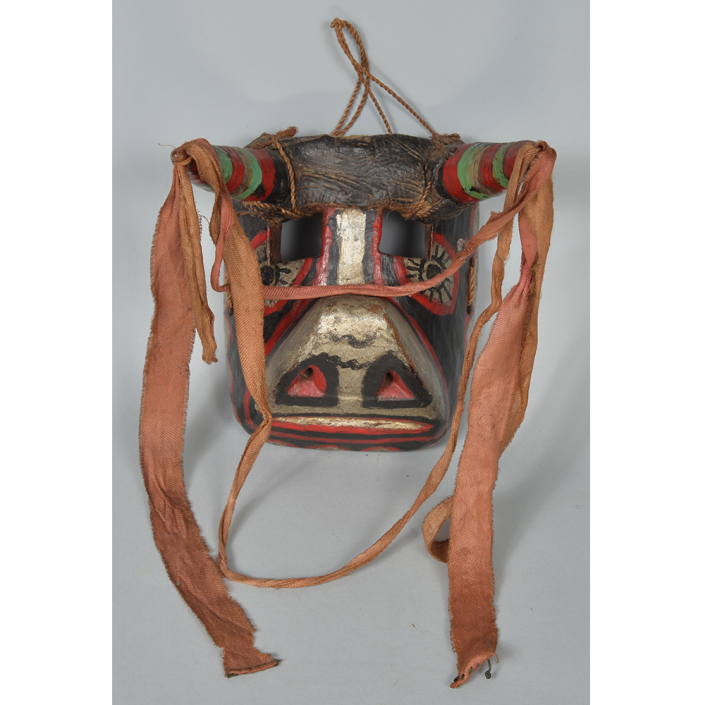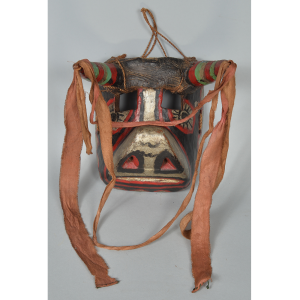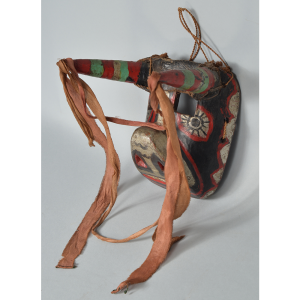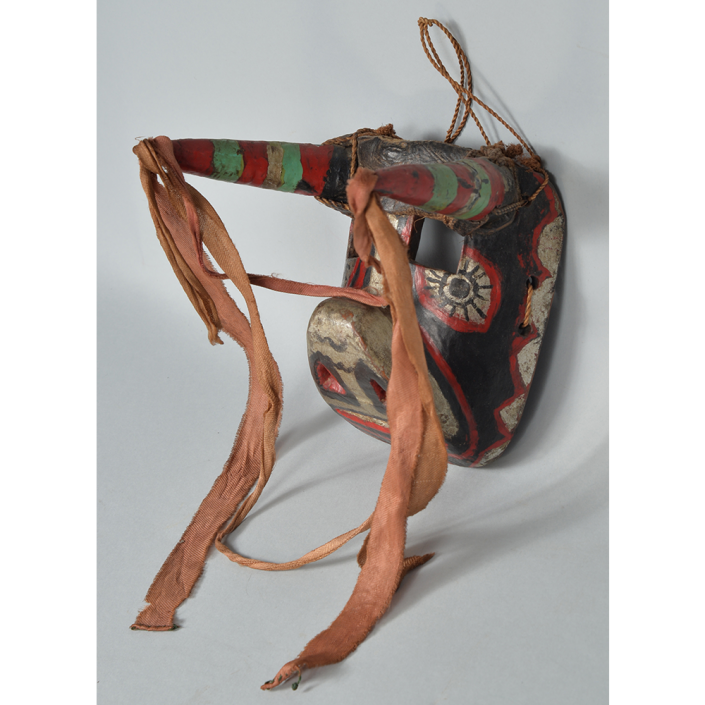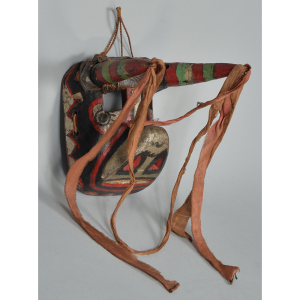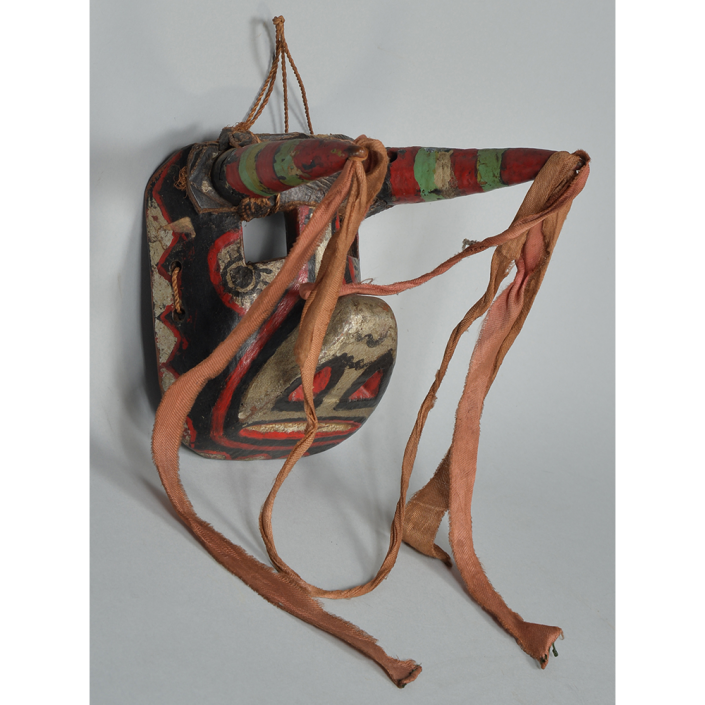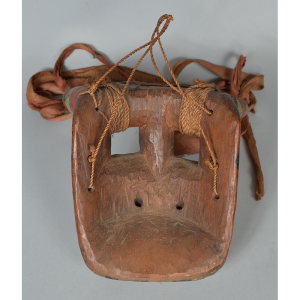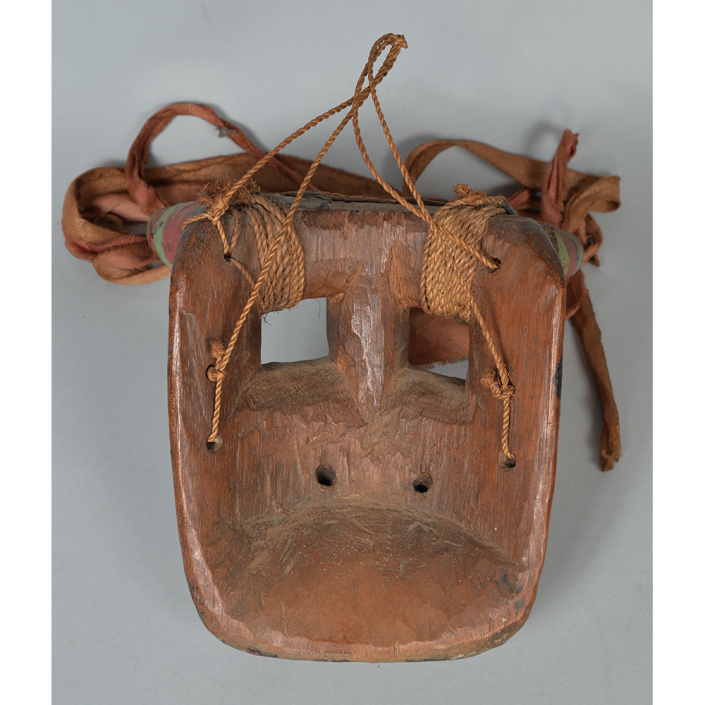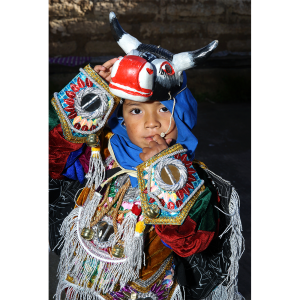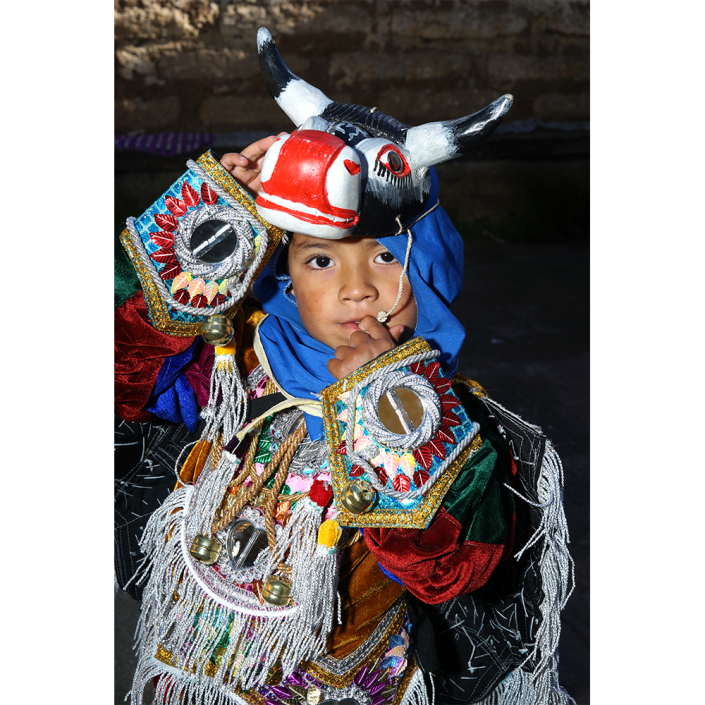TITLE: Torito Mask (Child’s)
TYPE: face mask
GENERAL REGION: Latin America
COUNTRY: Guatemala
SUBREGION: Nahualá
ETHNICITY: Mayan
DESCRIPTION: Child’s Torito (Little Bull) mask
CATALOG ID: LAGT041
MAKER: Unknown maker
CEREMONY: Baile del Torito
AGE: mid-twentieth century
MAIN MATERIAL: wood
OTHER MATERIALS: paint; dyed cotton cloth
The Baile del Torito (Dance of the Little Bull) also called the Danza del Torito, is an annual ceremony in several cities of central and southern Guatemala, usually during a holiday in honor of the town’s patron saint. The dance is accompanied by music from a marimba band.
The dance dates back to the 17th century. It tells the story of a cattle ranch in which the caporal or mayordomo (foreman) prohibits the vaqueros (cowboys) to interact with a bull like this one. The cowboys get the foreman drunk and perform bullfights. Eventually, a bull kills the foreman and the dance ends.
The dance frequently begins before sunrise and lasts for up to 12 hours. It may be performed for many days, sometimes over a week. Depending on the size of the town, there may be only one or several bulls and caporales, and up to 50 vaqueros. In some towns, such as Chichicastenango, there is both a white caporal and a black one. The costume of the vaquero is brightly colored and elaborate, with a hat sporting thick clusters of dyed ostrich feathers. In some towns, the vaquero carries a cape and maraca (rattle). The players of each character are chosen through Mayan rituals and are blessed by an Ai-lj (Mayan priest) before the dance.
For more on Guatemalan masks, see Jim Pieper, Guatemala’s Masks and Drama (University of New Mexico Press, 2006).
